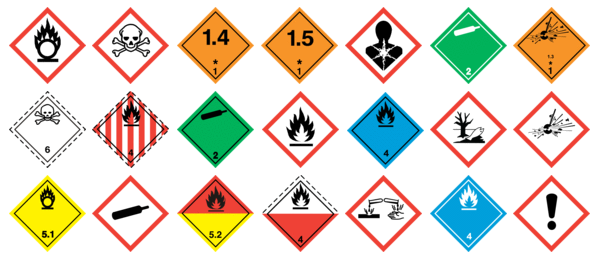CLP/GHS Labelling – Classification, labelling and packaging of substances and mixtures
CLP is the Regulation on classification, labelling and packaging of substances and mixtures.
This Regulation aligns previous EU legislation on classification, labelling and packaging of chemicals to the GHS (Globally Harmonised System of Classification and Labelling of Chemicals).
The GHS legislation is a United Nations system to identify hazardous chemicals, to effectively communicate with users these hazards through safety data sheets (SDS), standard symbols, phrases on packaging labels and to improve the safety of handling hazardous materials and its transportation.
As from June 1st 2015 the chemical labelling requirements are undergoing extensive changes, this comes from of revisions made to the worldwide GHS.
Manufacturers, importers, downstream users and distributors of chemical substances and mixtures must comply with GHS requirements, which cover all hazardous chemical substances, dilute solutions and mixtures.
GHS regulations include the following components:
- Hazard classification
- Modified safety data sheets
- Compliant labels and formats
From 1st June 2015, all substances and mixtures must be labelled according to the GHS regulations. By this date you will need to adjust your label printing system to accommodate the new requirements. The labels must consist of several different elements, including:
- Signal word
- Symbols (hazard pictogram)
- Product name or identifier
- Hazard statements
- Precautionary statements
Below are a few examples of the icons which are required in the new regulations:

Printable artwork for GHS icons can be downloaded from the UN website.
Previously, colour ‘portions’ of a hazardous warning label could be preprinted and shipped to manufacturers, then an overprint of any further key information could be printed in black at a later date. With the new GHS regulations, it now makes this method impractical in most applications.
GHS regulations state that from 1st June, companies will be required to print the entire labels in two colours, and will also be required on-demand.
It may seem a daunting time for companies having to adapt to these new legislations. For many it will mean updating their current printing process with all new equipment and label stock to incorporate the colour requirements.
With Labfax’s help and advice this does not need to be a stressful time.
There are a few aspects that companies should consider. Firstly, what you are required by law to print on your labels, for example symbols, identifiers and hazard statements. In addition, some may want to include corporate logos or graphic elements on each label, so other considerations like the label size will need to be factored in.
Secondly, manufacturers may have printing requirements other than GHS compliant labels, for example shipping labels. Considering multi-purpose printers, with additional features such as colour options, satisfy a range of printing needs.
Another consideration is future proofing. Along with manufacturers, legislation requirements may change as time goes on, so consider any revisions they may want to implement in the future.
There are also many benefits to adopting to the new regulations. The new label format can not only be used to enhance brand identity, but you could also significantly reduce printing costs and enjoy long-term savings, whilst ultimately improving safety standards.
At Labfax we will be more than happy to help you determine whether you need to upgrade and advise on which equipment and programs are right for you.

